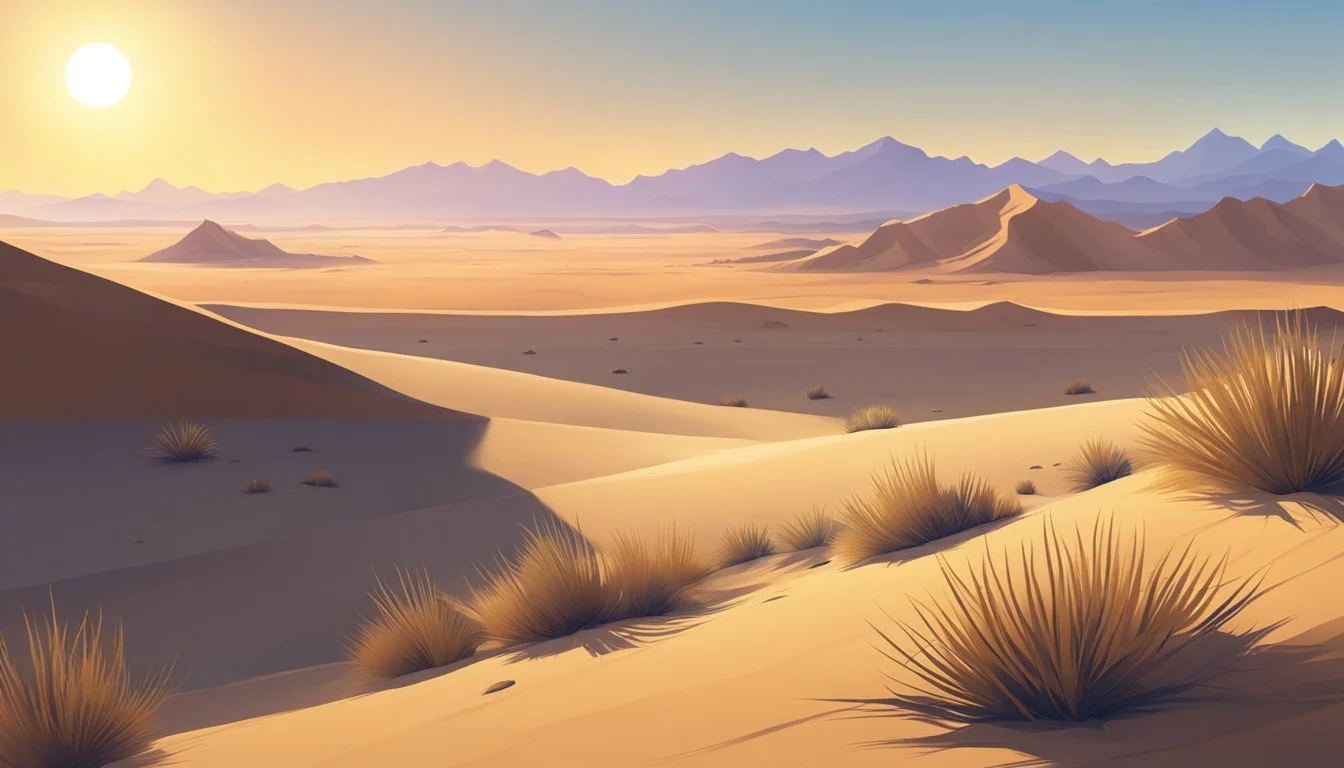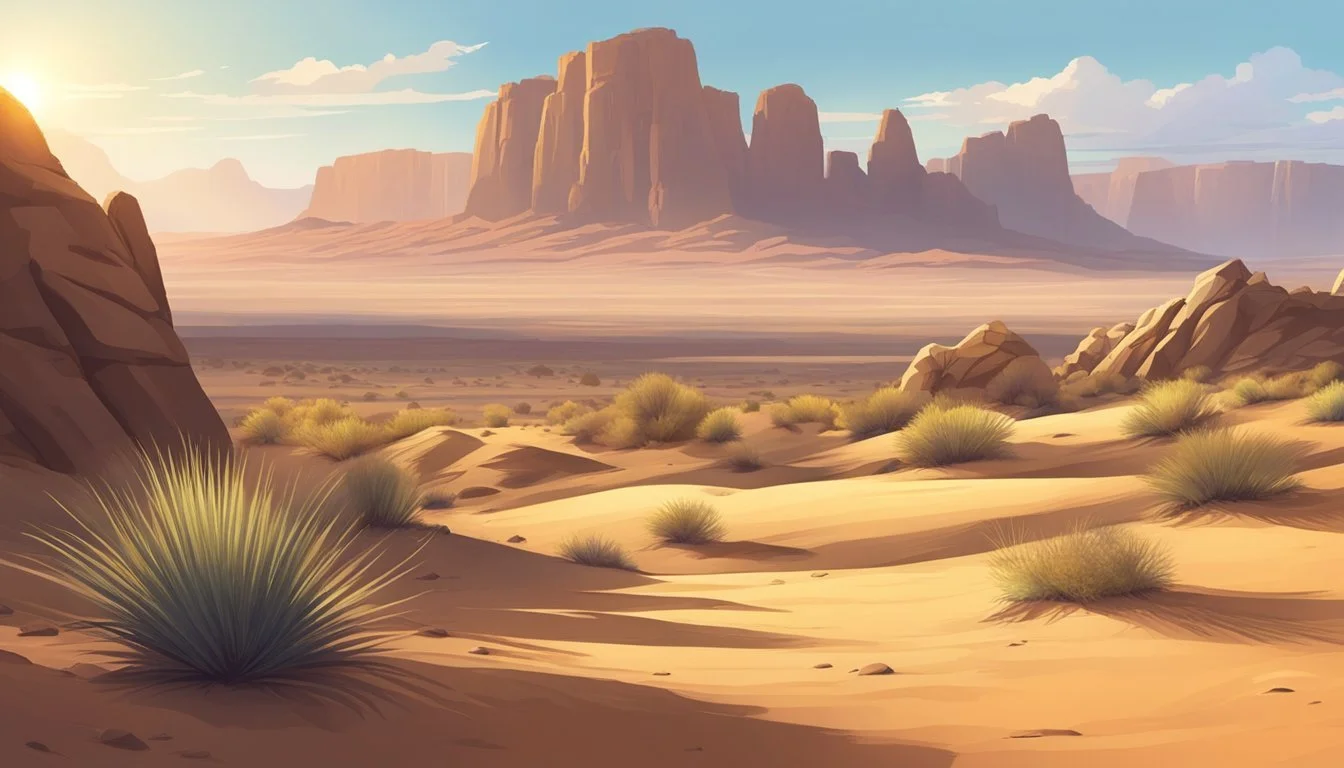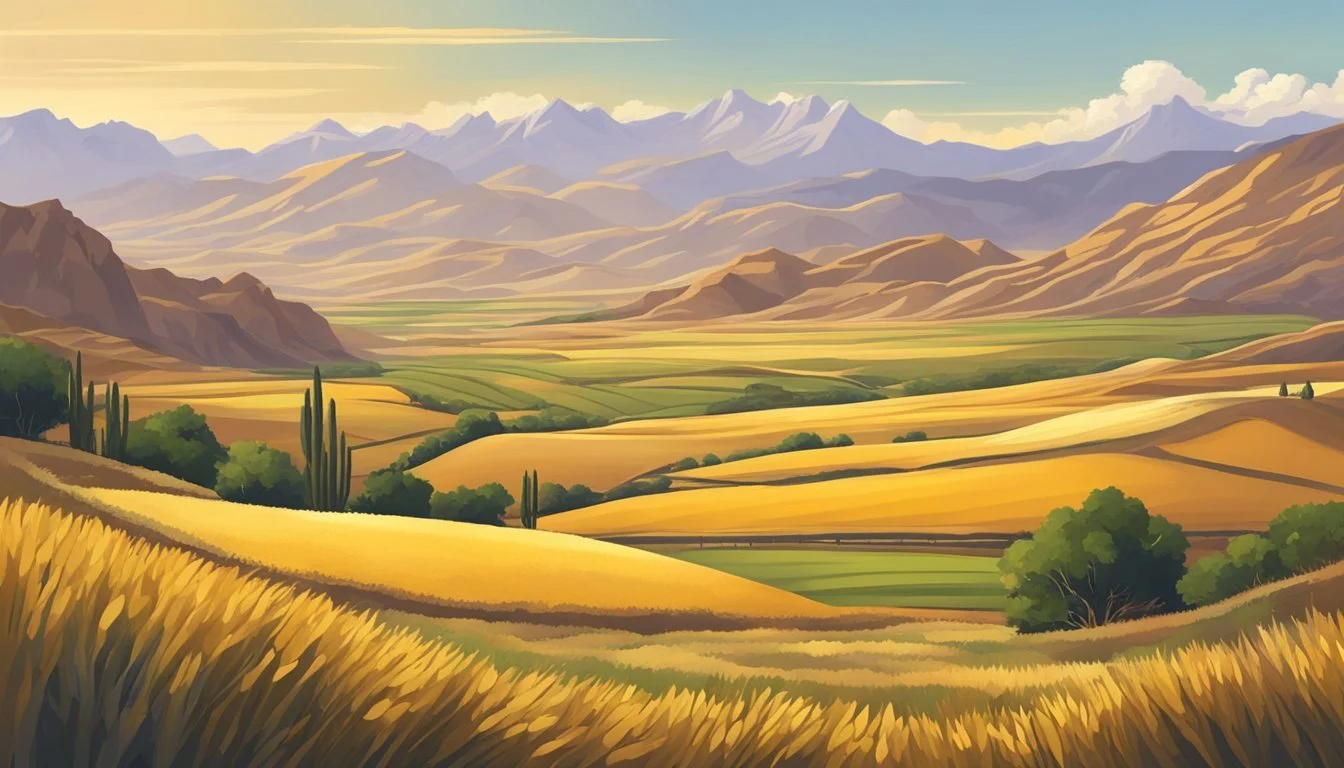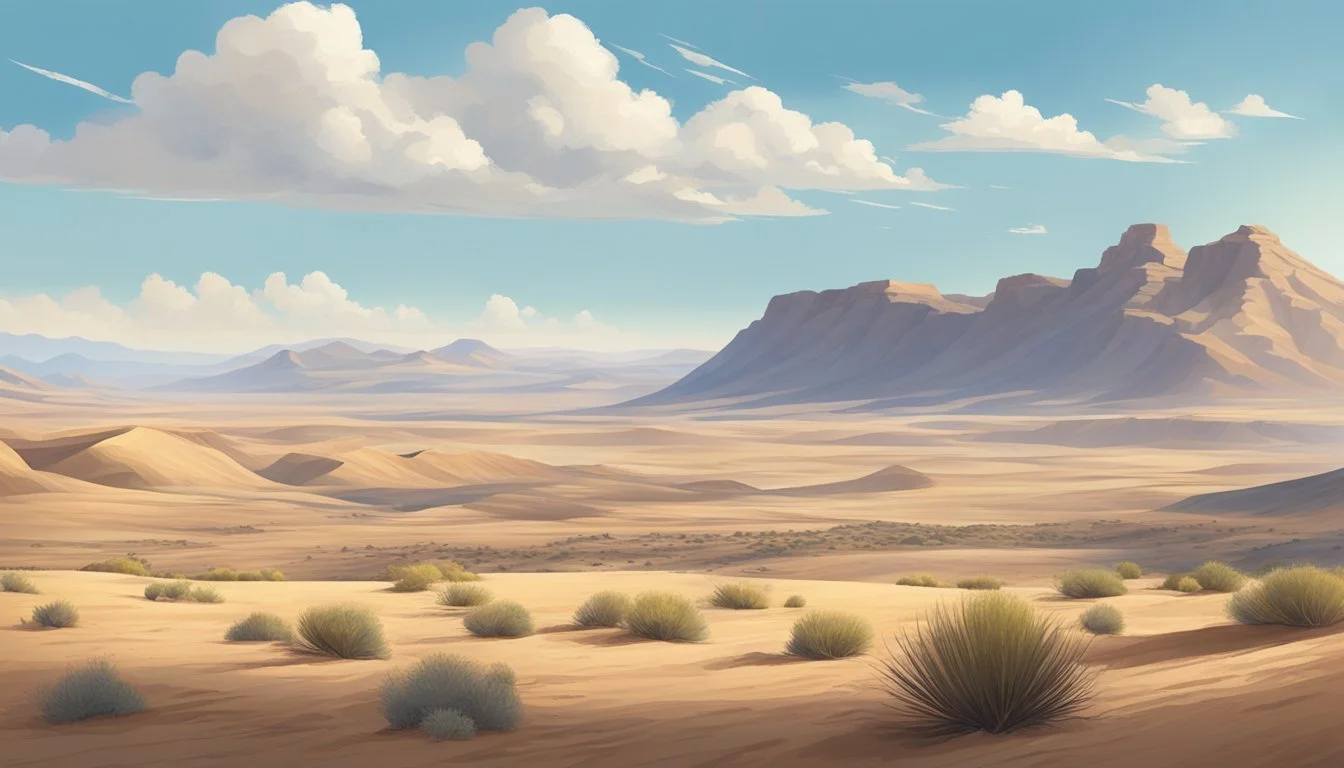High Desert Free Land
Opportunities and Challenges
The allure of High Desert Free Land attracts those seeking sustainable and off-grid lifestyles in 2024. With a push from organizations like the High Desert Institute, there's a growing interest in developing land projects aimed at survival and self-sufficiency. These initiatives focus on creating free, open-source solutions for basic human needs, contributing valuable knowledge to the community.
High desert regions, particularly in the Southwestern United States, provide vast, often overlooked opportunities for land acquisition. Listings such as those in Victorville, CA, and Kramer Junction, CA, showcase affordable prices that appeal to both investors and individuals ready to embrace a simpler, self-reliant way of life. Programs and projects in these areas are increasingly important as they not only foster community-building but also promote sustainable living techniques.
Connecting potential landowners with these resources and opportunities is crucial. Information gained from property listings, like those found on Zillow and LandWatch, highlights the diverse options available. With prices as low as $6,589 for five acres, the dream of owning high desert land can become a reality for many. These efforts are part of a broader movement to revitalize unused lands while promoting ecological and social resilience.
History of High Desert Free Land
The history of High Desert Free Land involves early settlements characterized by hope and ambition, followed by various government policies aimed at land acquisition.
Early Settlements
In the late 19th to early 20th centuries, settlers were drawn to the High Desert by the promise of free land. Homesteaders rushed in, encouraged by laws like the Homestead Act of 1862, which provided 160 acres to anyone willing to cultivate the land for five years.
Optimism was high, but many challenges awaited. The arid climate and harsh conditions were not conducive to farming. By the 1920s, many settlers abandoned their claims as drought and economic hardship took their toll. The surge of homesteaders quickly receded, leaving behind abandoned plots and unfulfilled dreams.
Land Acquisition Policies
The U.S. government implemented various policies to manage and redistribute the land in the High Desert. The founding of agencies such as the U.S. Forest Service (1905), National Park Service (1916), and Bureau of Land Management (1946) played crucial roles.
These agencies were tasked with overseeing and preserving vast tracts of land, amounting to hundreds of millions of acres. Policies fluctuated from promoting settlement to focusing on conservation. Over time, the emphasis shifted towards balancing public use with environmental stewardship. Today, these lands are managed to support multiple uses, including recreation, grazing, and conservation.
Current State of High Desert Free Land
The High Desert free land area, located primarily in California and Arizona, features unique demographics and distinctive climatic conditions, making it an intriguing region for various types of developments, including desert ranches.
Demographics
The High Desert region encompasses a vast area that includes parts of both California and Arizona. Populations here are generally sparse, with significant variations between the urban centers and remote rural areas. Major towns such as Palmdale and Victorville add to the density, but the overall population remains low compared to other regions.
A large portion of the residents relies on agriculture, ranching, and renewable energy projects for their livelihoods. There is also a growing interest in real estate, particularly for those seeking expansive properties for ranches or recreational uses. The demographic composition includes a mix of long-term residents and newer arrivals attracted by the region's opportunities.
Climate and Geography
The climate in the High Desert region is characterized by hot summers and mild winters, with very low annual rainfall. The arid conditions are both a challenge and an advantage, depending on agricultural practices and water resource management. The landscape features a mix of open plains, rugged mountains, and desert scrublands.
High summer temperatures often exceed 100°F (38°C), while winter nights can be surprisingly cold, dropping near freezing. The geography includes significant tracts of public and private land, with varying elevations and soil types. This diverse topography influences land use patterns, supporting different kinds of agricultural and development activities.
Regulations and Ownership
For individuals interested in obtaining land under the Desert Land Act or engaging in commercial development, understanding the rules surrounding land rights and development laws is crucial. The following subsections provide detailed information on these essential topics.
Land Rights
The Desert Land Act, enacted on March 3, 1877, facilitates the reclamation, irrigation, and cultivation of arid and semiarid public lands in the Western United States.
Eligibility:
Only U.S. citizens or those of requisite age can make a desert-land entry.
Entry applicants need to be residents of the state where the land is located, except in Nevada.
Land Allocation:
Each entry is limited to 320 acres.
Claimants must undertake significant improvements like irrigation to cultivate the land within three years.
Commercial Development Laws
Commercial development on high desert lands is regulated by both state and federal laws to ensure sustainable and responsible use.
Assessment Requirements:
Environmental impact assessments are mandatory for significant projects such as constructing CO2 disposal wells or pipelines.
Permitting Process:
Developers must obtain permits from agencies like the Bureau of Land Management (BLM).
Approval processes ensure compliance with laws covering natural resources and community impact.
Usage Restrictions:
Specific areas may have usage limitations to protect ecological balance and cultural sites.
Commercial activities must align with land use policies to avoid penalties and ensure long-term sustainability.
Agricultural Opportunities
Agricultural development in high desert free land offers significant potential for both livestock and arable farming. These opportunities leverage innovative techniques and technologies to maximize productivity and sustainability.
Livestock Farming
Raising livestock in high desert areas is feasible with proper planning and resource management. Farmers can opt for hardy breeds that thrive in arid conditions, such as goats, sheep, and certain cattle species. Extensive grazing practices are common as they allow animals to forage over large areas, reducing pressure on the land.
Water management is crucial. Efficient irrigation systems and water-conserving practices help maintain pastures. Implementing rotational grazing techniques can improve vegetation cover and soil health, addressing desertification issues. Additionally, integrating livestock with crop farming can enhance nutrient cycling and land use efficiency.
Arable Farming
Arable farming in high desert conditions often involves growing drought-resistant crops. Technological advancements in solar-powered desalination and irrigation play a crucial role. Crops like millet, sorghum, and certain high-value vegetables can thrive here.
Farmers benefit from integrated farming systems that include both crop and livestock production. This integration helps create sustainable and resilient agricultural landscapes. Modern methods like automated water recovery and greenhouse farming with regulated climates ensure optimal growth conditions and soil conservation. Utilizing biogas plants for renewable energy and soil improvement further supports sustainable agriculture in these regions.
Commercial Prospects
High Desert Free Land presents unique opportunities for commercial ventures. Prominent prospects include renewable energy projects, benefiting from the region’s ample sunlight, and tourism and recreation, capitalizing on the area's natural beauty and diverse activities.
Renewable Energy Projects
The High Desert area is ideal for renewable energy investments. Its consistent sunlight makes it a prime location for solar energy farms. Companies are increasingly exploring desert lands to establish extensive solar arrays, which can generate significant electricity.
Additionally, wind energy projects are becoming viable due to favorable wind conditions in certain parts of the region. These initiatives not only supply sustainable energy but also create jobs and contribute to the local economy. Moreover, the development of energy storage solutions can ensure that power is available even when sunlight or wind is not optimal, enhancing the reliability of these energy sources.
Tourism and Recreation
The High Desert offers a myriad of opportunities for tourism and recreation businesses. Its stunning landscapes attract adventure enthusiasts for activities like hiking, camping, and off-road driving.
Cultural and historic sites in the area provide rich experiences for visitors interested in the local heritage. Businesses focusing on eco-tourism can thrive by offering guided tours and educational programs that highlight the desert’s unique ecology.
Additionally, potential exists for developing resorts and wellness retreats, leveraging the tranquil and scenic environment to attract tourists seeking relaxation and rejuvenation. These ventures not only draw visitors but also boost the local economy by creating demand for hospitality services, dining, and retail amenities.
Challenges and Considerations
The "High Desert Free Land" concept presents unique challenges and considerations, focusing primarily on resource management and environmental protection. Specific issues include sustainable land use practices, maintaining ecological balance, and preserving natural habitats.
Resource Management
Resource management in high desert regions requires careful planning and implementation of water conservation methods. These areas often have limited water sources, making it crucial to manage and allocate water efficiently. Practices such as rainwater harvesting and the development of efficient irrigation systems can help maintain agricultural productivity.
Education plays a significant role in promoting sustainable resource use. Providing local communities with the knowledge and tools needed to implement conservation techniques can foster long-term sustainability. Proper land use planning is also essential to prevent over-exploitation and degradation.
Effective resource management must also consider energy use. The integration of renewable energy sources, like solar and wind power, can reduce dependency on non-renewable resources. This shift not only preserves the environment but also ensures a stable energy supply for future generations.
Environmental Protection
High desert environments are fragile and require active measures to protect their ecosystems. Desertification is a significant threat, driven by factors such as overpopulation, urbanization, and unsustainable agricultural practices. Managing these causes is critical to preserving desert landscapes.
Reforestation efforts can combat land degradation by stabilizing soil and improving local climate conditions. However, these projects must be carefully planned to ensure the survival of introduced plant species and avoid disrupting the existing ecosystem. Collaborative initiatives involving governmental and non-governmental organizations play a crucial role in such conservation efforts.
Protecting biodiversity is also vital. High desert regions host unique flora and fauna that need protection from human activities. Establishing protected areas and enforcing regulations can help maintain these ecosystems. Community involvement and education in environmental conservation are essential to achieving these goals.
Community and Education
High Desert Free Land places a strong emphasis on community building and education initiatives.
A notable example is the involvement of seasoned experts from the off-grid community. They launch projects aiming to research, develop, and share open-source solutions addressing basic human needs. These efforts foster a foundation for sustainable living.
Engagement through educational programs is another key element. Initiatives such as the Desert Discovery Day and the Desert Encounters virtual series, hosted by organizations like Desert Foothills Land Trust, provide educational experiences for various age groups. These programs highlight the importance of conservation and sustainable practices.
Community partnerships play a substantial role. The High Desert Partnership's studies show the benefits of tackling community challenges together. They collaborate with foundations and stakeholders to produce resources and guides aimed at strengthening local communities. This collaborative approach ensures that solutions are both practical and widely accessible.
Moreover, the High Desert Museum’s land acknowledgment signifies a commitment to Indigenous education. They work to honor and integrate the knowledge and values of Indigenous tribes, promoting a more inclusive and respectful understanding of the land's history.
Workshops and guided tours, conducted regularly, offer hands-on learning opportunities. These activities are designed to engage participants in the diverse ecological and cultural aspects of the high desert region.
Through these various educational and community-focused initiatives, High Desert Free Land exemplifies a holistic approach to sustainable living, emphasizing the critical intersection of education and community action.
Future Outlook
The future outlook for the High Desert Free Land involves examining development projections and sustainability goals. These aspects will shape the region's growth and environmental impact.
Development Projections
By 2024, significant urban and infrastructure developments are anticipated in the High Desert Free Land. Rapid growth is expected in housing projects, commercial spaces, and transportation networks.
Local governments are implementing zoning regulations to manage this expansion. These regulations aim to balance urbanization with the preservation of natural landscapes. Tech hubs and renewable energy projects are also set to play a crucial role.
Investment in solar farms and wind energy will likely increase, positioning the area as a leader in sustainable technology. This development aims to attract both residents and businesses, boosting the local economy.
Sustainability Goals
Achieving sustainability in the High Desert Free Land focuses on resource management and environmental protection. Projects aim to reduce water consumption through efficient irrigation systems and promoting xeriscaping.
Efforts to combat climate change are integral, with plans to enhance green spaces and decrease carbon footprints. Community initiatives include recycling programs and public education campaigns.
Renewable energy projects are prioritized to reduce reliance on fossil fuels. Local authorities are setting ambitious carbon neutrality targets aiming for significant reductions by the near future. These efforts aim to ensure the High Desert Free Land remains resilient and thriving amidst environmental challenges.










